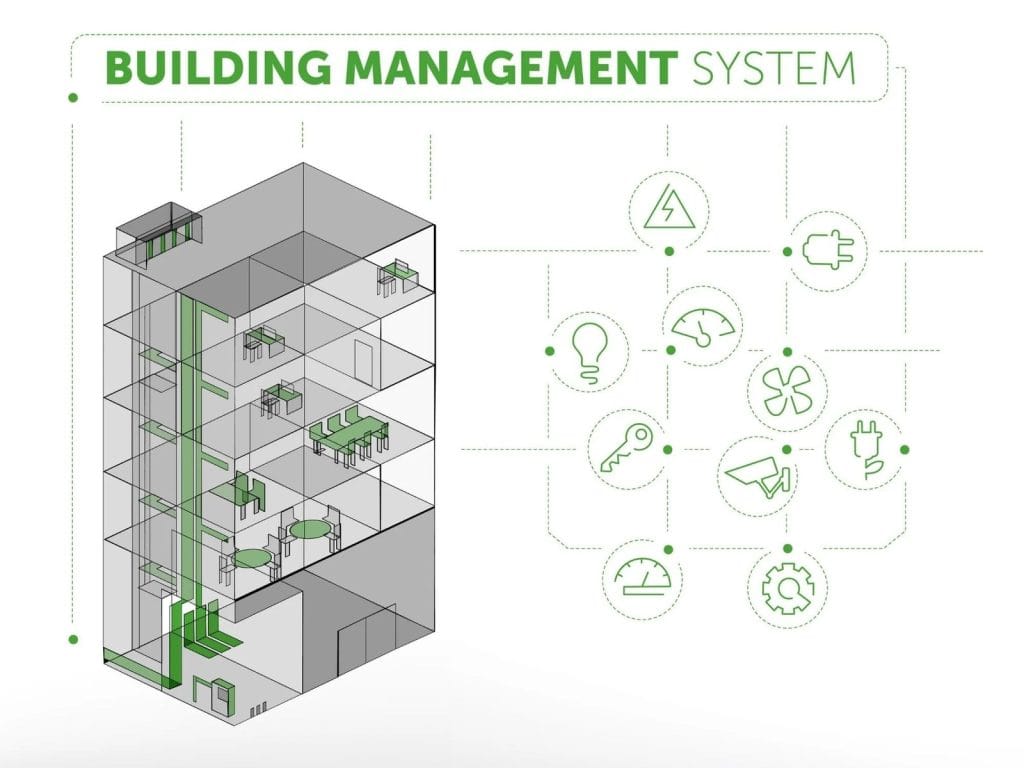The operational efficiency of modern commercial and industrial buildings relies on the control systems that take care of everything, including HVAC operations and energy consumption patterns. However, many facility managers and engineers find themselves scratching their heads over a pretty basic question: what’s the real difference between a building management system vs energy management system?
While the pros in the industry tend to throw these terms around like they mean the same thing, they’re actually looking at two rather distinct approaches to making your facility run more smoothly, with each one having its own strengths and weaknesses. Getting a grip on what those differences are is a big deal, because it can have a real impact on your facility’s operational costs, how efficiently you use energy, and your long term sustainability plans.

Understanding the Building Management System Definition
A building management system (BMS), sometimes referred to as a Building Automation System (BAS), serves as the central nervous system of modern commercial and industrial facilities. Fundamentally, a BMS is a computer controlled system that oversees and regulates the mechanical and electrical systems in a building. The system generally manages the HVAC systems, light systems, power systems, fire safety equipment, security systems and access control systems and mechanisms via a single interface.
A modern BMS can be described as a multi-layered architecture that has many layers that collaborate with each other. The field layer comprises sensors, actuators and controllers which deal with physical equipment directly. These instruments transmit data into the automation layer and programmable logic controllers (PLCs) and direct digital controllers (DDCs) use it in making real-time decisions by reference to established logic and setpoints. Lastly, the management layer also offers a graphical interface, trending and alarm management tools to the operators.
The beauty of a BMS lies in the fact that it enables to establish automated sequences of actions reacting to varying conditions and these are not operated by people. As an example, occupancy sensors can send the BMS a signal that a conference room is not used, causing the temperature setpoints to change automatically, reduce the ventilation rates and make the lighting less bright. It is this scale of integration that is turning single building systems and converting it into an intelligent ecosystem.

What Are Building Energy Management Systems BEMS?
Building energy management systems BEMS represent a specialized subset of building control technology focused specifically on optimizing energy consumption and reducing operational costs. A BMS manages the building systems on a large scale; whereas a BEMS manages the energy-related parameters with laser precision. The system continuously checks the energy consumption of all building systems to establish inefficiencies in its systems and therefore takes corrective measures to reduce wastage.
The basic difference is the major purpose. The functioning of a BEMS is not about controlling when equipment runs, it examines how effectively equipment works and is continuously looking at ways of maximizing energy use. The system gathers granular data related to the utility meters, sub meters and the individual equipment used in the consumption of energy. This information is fed to advanced analytics engines that help compare performance against historical trends including the weather and occupancy volume as well as industry standards.
Advanced building energy management systems BEMS incorporate features that go well beyond basic energy monitoring:
- Demand response capabilities that automatically shed non-critical loads during utility peak demand periods
- Load forecasting algorithms that predict future energy requirements based on historical patterns
- Carbon footprint tracking and renewable energy integration capabilities
- Compliance reporting tools that simplify regulatory requirements
Organizations generally achieve energy savings of 10-30 percent in the initial year of implementation, based on the initial efficiency of baseline of the facility, as well as the complexity of the BEMS implementation. These systems are useful in the certification of ISO 50001 and carbon neutrality, as well as corporate sustainability reporting, in addition to direct cost savings.
Key Differences: Building Management System vs Energy Management System
Understanding the building management system vs energy management system distinction requires examining their scope, objectives, and operational focus. A BMS is holistic in its approach to the construction of operations, taking into consideration the comfort, safety and efficiency of the operation of all systems within the building. On the contrary, BEMS does not have a divided attention on energy optimization since it considers comfort and operations as limiting factors to which the energy should be minimized.
1. Functional Focus
BMS systems are very effective and have the ability to provide real time management and synchronization in a variety of building systems. They coordinate complicated programs such as morning warm-ups, emergency plans, and employee after-hours systems. The success measures related to the system are keeping temperature and humidity within a range of setpoints, speedy response to alarms, and comfort of occupants. BEMS platforms on the other hand do not emphasise on real time control, but on trend analysis and bench marking of energy, detection of utility billing and opportunities on optimization.
2. Data Handling Approaches
A BMS typically produces control decisions of split-second response based on present circumstances and programmed logic and controls thousands of data points in real-time. The system stores data basically to be used in troubleshooting and simple trending. However, a BEMS considers its ability to store data to be its most prized resource, with years of comprehensive granular energy usage data stored and complex analytics performed to derive viable insights. This data-based strategy has allowed observing the trends in minor patterns and long-term trends.
3. User Interaction Patterns
BMS operators focus on maintaining stable operations, responding to alarms, and making manual adjustments when automated sequences don’t achieve desired outcomes. BEMS users, typically energy managers or sustainability coordinators, spend their time analyzing reports, investigating consumption anomalies, calculating return on investment for efficiency projects, and tracking progress toward energy reduction targets.
Integration: Energy Management Systems for Buildings
The evolution of energy management systems for buildings has led to increasing convergence between BMS and BEMS technologies. The progressive facility managers are realizing that to achieve an optimum building performance, in addition to extensive capability to control, there must be profound energy intelligence. This has led to the development of integrated platforms that can be seen to unify the real- time control capabilities of the conventional BMS and the analytical capabilities of the independent BEMS.
The types of integration strategies are different based on the needs of the facilities and on the infrastructure available. In other cases, a BMS is used as the controlling system and a BEMS is superposed and communicates with the BMS to access the data on the energy and offer optimization advice. In other facilities, unified platforms are realized which manage both control and energy management in one software environment which has reduced the data silos and has allowed use of more complex optimization algorithms.
When both control and energy management systems use the same database and operational infrastructure, they realize that the facilities may adopt a demand based control strategy that will modify operations before real time energy costs and grid conditions. As an illustration, throughout peak pricing times, the integrated system can adjust the temperature control point slightly higher, delay non-essential equipment use or engage thermal storage to minimize demand.
Choosing the Right System for Your Facility
The choice of a BMS, BEMS, or integrated platform cannot be made without a particular consideration of the operational priorities of your facility, current infrastructure, as well as your organizational strategies and priorities. When your main problems concern old outdated equipment or unstable processes or even complaints about inhabitants comfort, a good BMS must be your first priority. As soon as excellence in operations has been implemented, the overlaying of energy management capabilities works much more efficiently.
Dedicated BEMS implementations are most advantageous in facilities that have steady operations but are also expensive in terms of energy or whose sustainability goals are hostile. Previously mentioned factors tend to make manufacturing facilities, data centers, hospitals, and commercial buildings with a large energy spend the most rapidly returned BEMS investments since both have a high baseline consumption and limitless optimization potential.
Integration platforms are best supported in new construction projects or great retrofits when control systems are being changed regardless. The beginning with a single architecture removes the complexity of operating different systems and allows advanced strategies at the outset. Integrated platforms should be highly considered in organizations that aim at ensuring net-zero emissions or engage in sustained corporate accolades that are aggressive.
Implementation Best Practices
Effective implementation has to be planned and implemented. Begin with an in depth facility analysis, which lists existing systems, sites of integration and development of performance baseline metrics. Specification of the system is then worthy of special consideration – give detailed specifications of the requirements, not an abstract statement of requirement. Indicatively, state that HVAC energy will be cut by 20% without lowering temperature setpoints below ± 1 o F.
The commissioning step is an essential step of assuring that all control sequences are performing as expected, alarming is occurring as expected, and trending is displaying realistic data. In the case of energy management systems, commissioning must provide verification of utility meter accuracy, validation of energy calculation and confirmation that reporting is in line with the actual utility bills.
Continuous optimization is the difference between high performance systems and those that are slow to deteriorate. Have a defined system maintenance owner, people assigned with the specific task to analyze the analytics reports periodically, and set up procedures to make the needed improvements. Lots of facilities have 50 out of the potential savings being realised at the first implementation but with the years of constant improvement, the remaining 50 per cent of the savings are realised.
Conclusion
The difference between a building management system vs energy management system is more than just technical specs, it boils down to two fundamentally different approaches to getting the most out of your building. A Building Management System (BMS) gives you the solid foundation you need to run your building reliably, comfortably, and without much fuss. An Energy Management System (BEMS) on the other hand gives you the tools to really dig in and understand how to make your energy usage more efficient, and to keep on improving it. Most people who are serious about managing their facilities get this, that these are not competing ideas but rather two sides of the same coin, the right combination of both is what’ll really get things humming.
For over 75 years, IET has been pioneering the way in electrical engineering and innovation all across East Africa. We’ve been delivering game-changing building automation and energy solutions that turn the way facilities operate on its head. Our team has got the technical knowhow and a whole lot of practical experience with actually getting these systems up and running. What that means is you can be sure your building management system will actually deliver real results. Whether you’re looking to upgrade an existing setup or starting from scratch with new facilities in Kenya, Uganda or Tanzania, we’re your one-stop-shop. Ready to get the most out of your building and slash operational costs? Give IET a call. We’ll be happy to sit down and have a chat about how our building management and energy solutions can shake things up for you.
